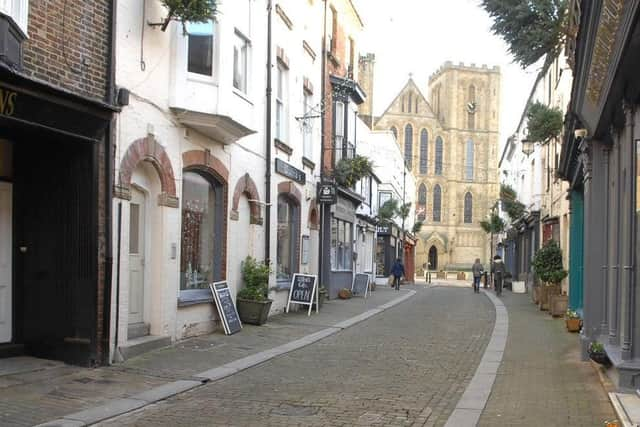These will be the most expensive Harrogate areas for council tax from April
and live on Freeview channel 276
Tax rises from Harrogate Borough Council, North Yorkshire County Council and police and fire services were all approved last month and will send bills for the average Band D property beyond the £2,000 mark.
But extra surcharges on top of this from parish councils mean some households will pay more than others - and out of the 89 parishes in the borough, residents living in Nun Monkton will pay the most with average bills set to top £2,090.68 from next month.
Here are the top 10 most expensive areas for 2021/22:


1) Nun Monkton Parish Council - £2,090.68
2) Ripon City Council - £2,077.94
Advertisement
Hide AdAdvertisement
Hide Ad3) Roecliffe and Westwick Grouped Parish Council - £2,060.99
4) Little Ribston Parish Council - £2,054.00
5) North Stainley-with-Sleningford Parish Council - £2,051.65
6) Baldersby Parish Council - £2,049.78
7) Rainton-with-Newby Parish Council - £2,047.55
8) Boroughbridge Parish Council - £2,046.36
9) North Rigton Parish Council - £2,045.96
10) Tockwith and Wilstrop Grouped Parish Council - £2,045.76
Advertisement
Hide AdAdvertisement
Hide AdAt the other end of the chart, nine parish councils areas which agreed to freeze their share of council tax collections will see average bills come to the lowest level of £2,000.17 for the average Band D property.
These areas include Brearton, Cundall and Norton-le-Clay, Langthorpe, Markenfield Hall, Masham, South Stainley-with-Cayton, Thornthwaite-with-Padside, Thornville and Walkingham Hill with Occaney.
How is council tax calculated?
Your council tax band determines how much you pay and is calculated using the value of your property at a specific point in time.
Bands range from A to H and are based on what the Valuation Office Agency believes your home might have sold for in April 1991. Band D is the standard measure of council tax and is often used to make comparisons.
Advertisement
Hide AdAdvertisement
Hide AdHarrogate Borough Council is responsible for collecting all council tax and estimated many residents feeling the financial strain of the coronavirus pandemic will struggle to pay their bills this year.
The authority has help on offer for this as residents can apply to have their bills reduced or ask for a review of their monthly payments. This could include spreading payments across 12 months instead of 10 or arranging a payment holiday and residents can also challenge which band they believe their property should be in.
For more information go to www.harrogate.gov.uk/council-tax
How much is each authority charging?
North Yorkshire County Council makes up the majority proportion of bills - around 70% - and last month approved a 3.49% increase which means its share of council tax for the average property will go up to £1,411.05.
Also in February, Harrogate Borough Council voted to approve its £5 rise which will see its collections for the same average Band D property go up to £250.92.
Advertisement
Hide AdAdvertisement
Hide AdThe 1.99% rises for police and fire services were agreed by the North Yorkshire Police, Fire and Crime Panel and will see the charge for police increase to £271.06 and fire £74.14.
By Jacob Webster, Local Democracy Reporter
Comment Guidelines
National World encourages reader discussion on our stories. User feedback, insights and back-and-forth exchanges add a rich layer of context to reporting. Please review our Community Guidelines before commenting.